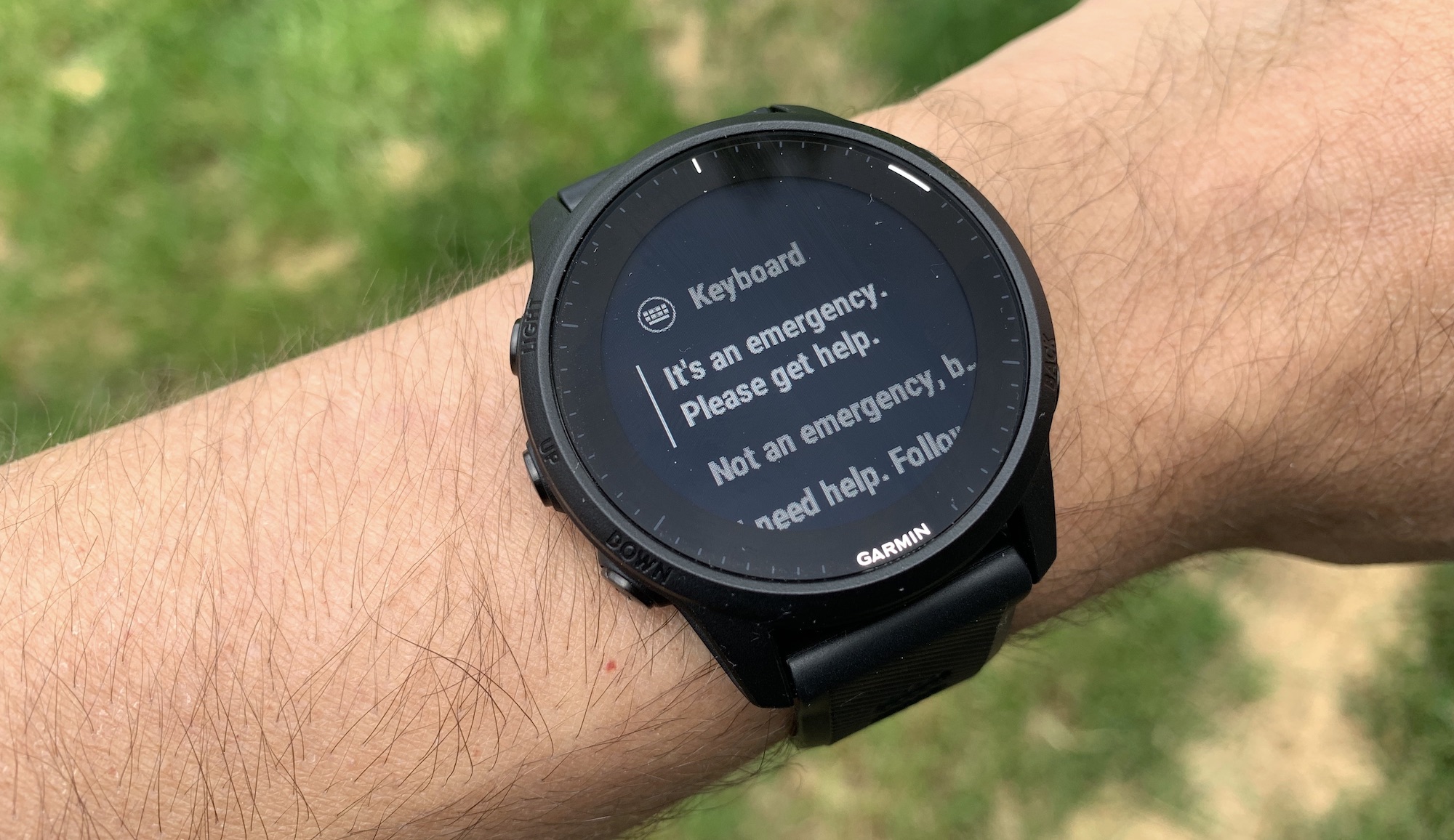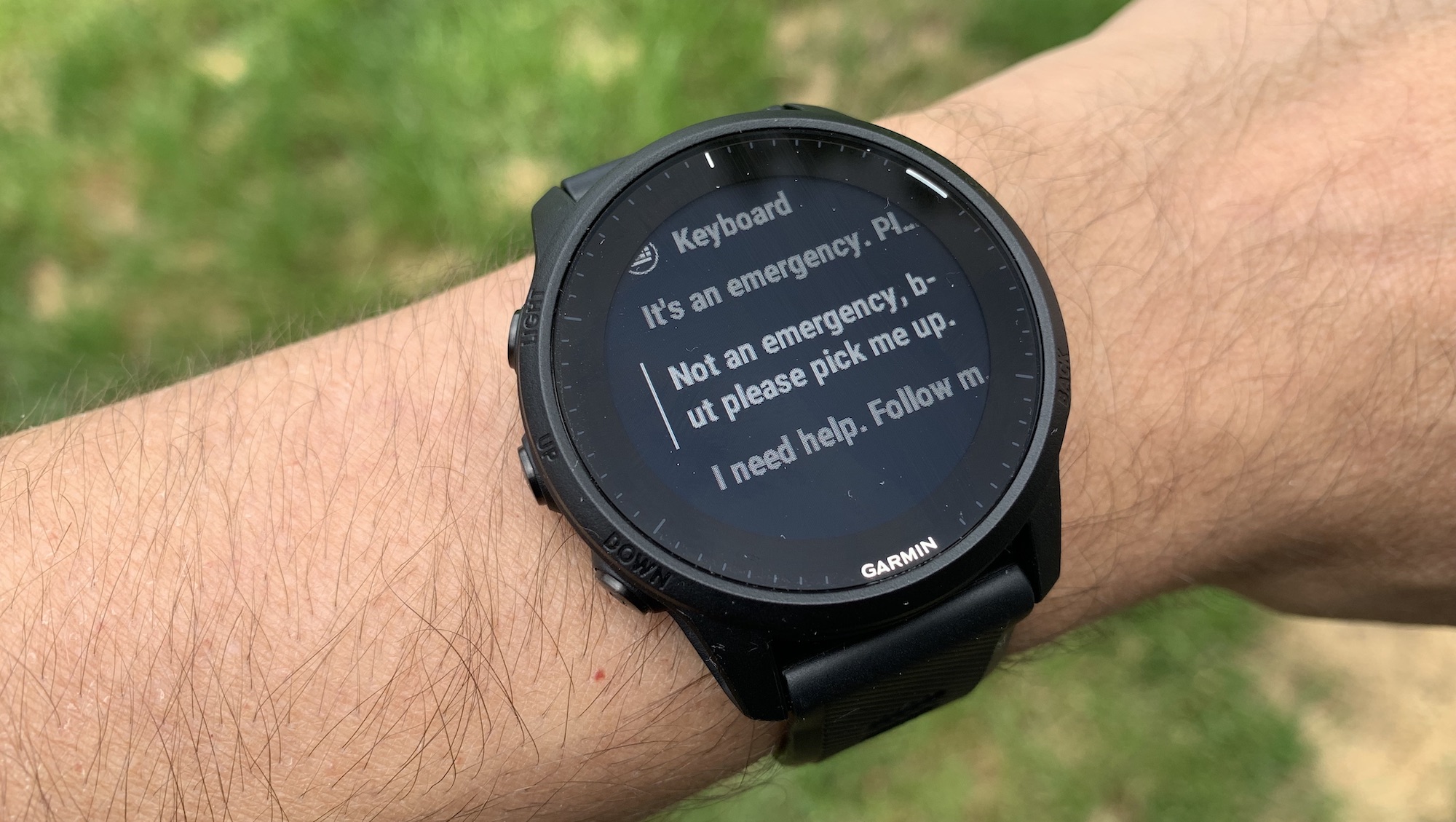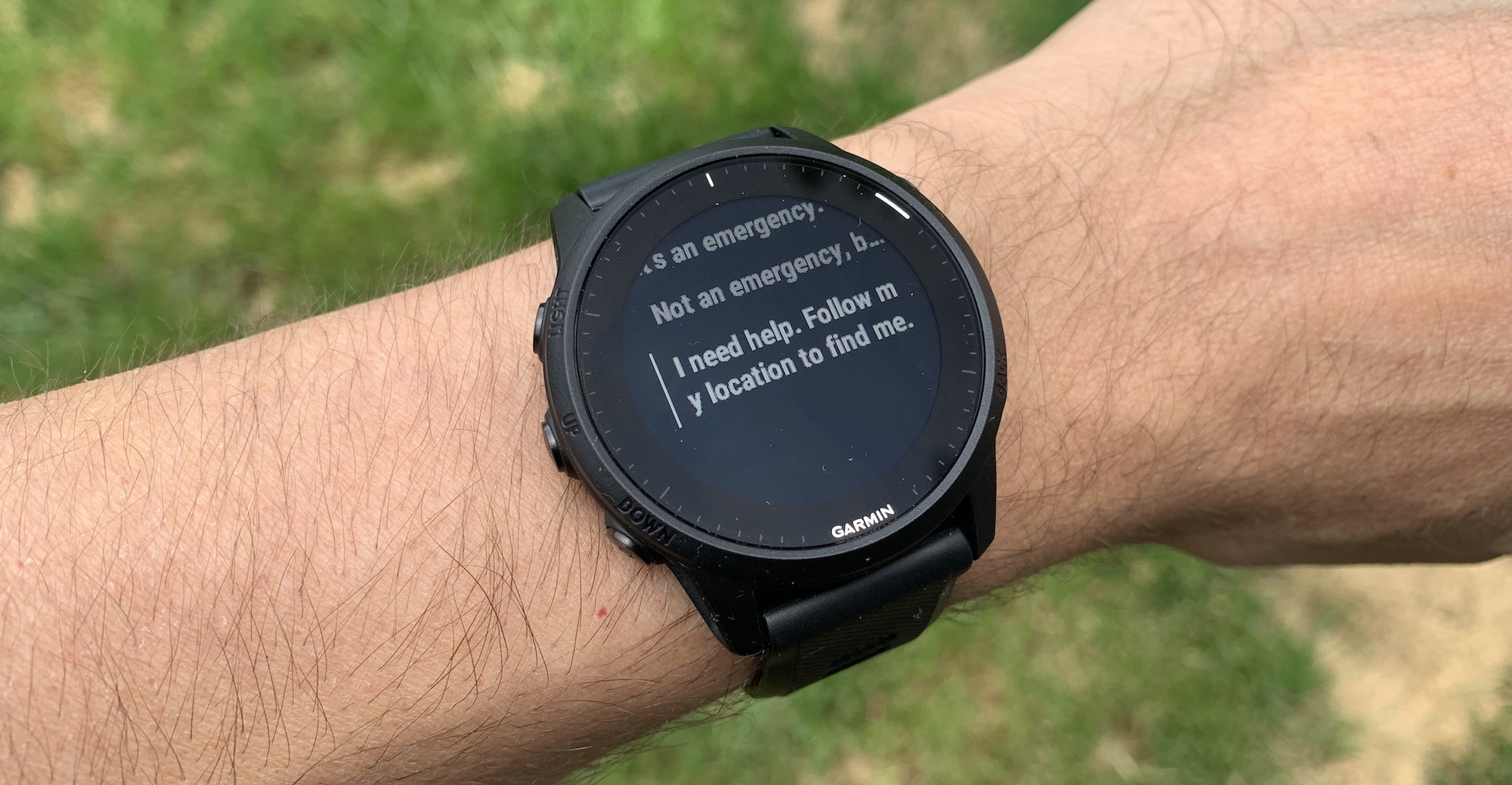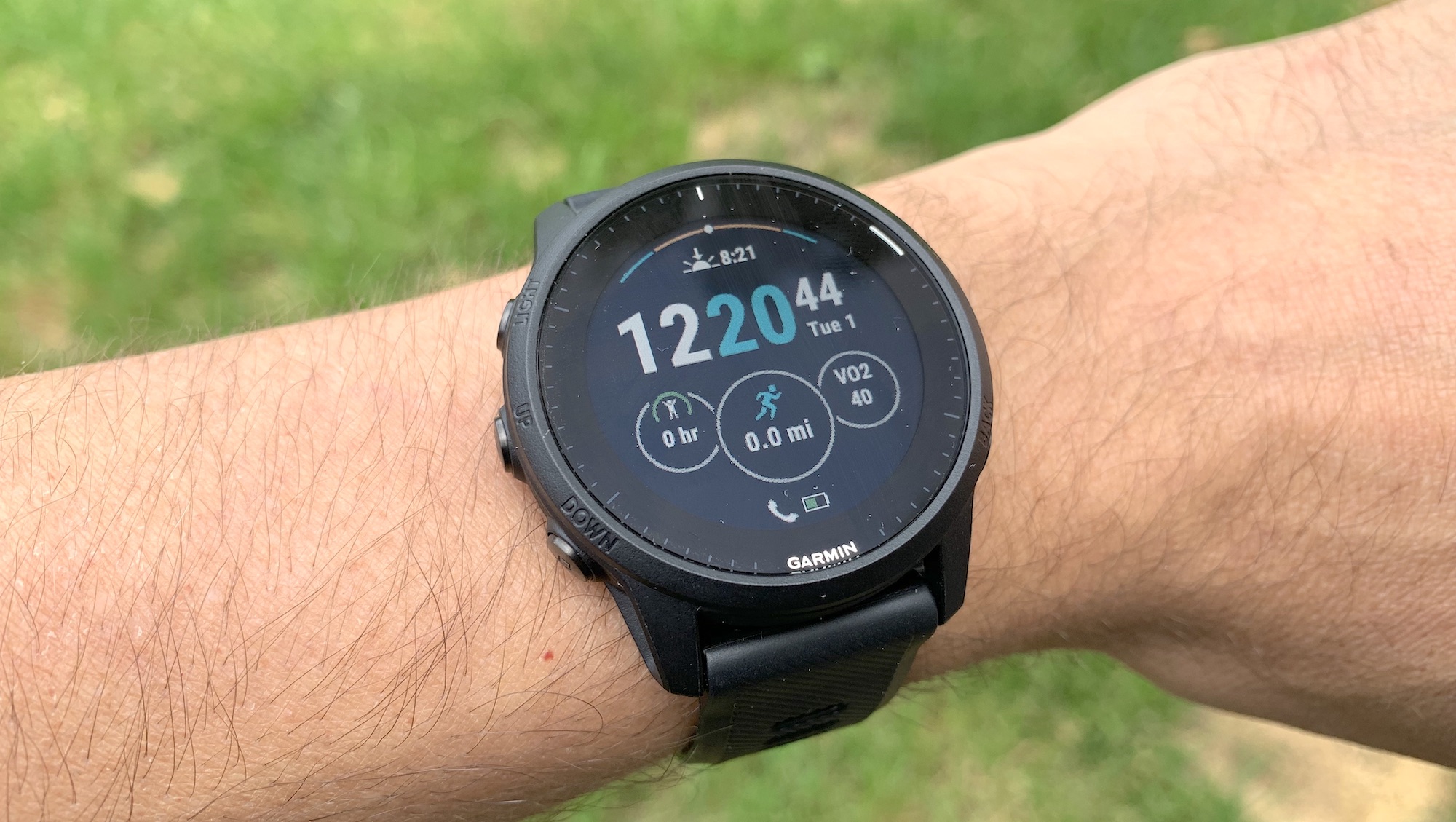Early Verdict
The Garmin Forerunner 945 LTE lets you call for help without your phone
Pros
- +
Good design
- +
Long battery life
- +
Accurate tracking
Cons
- -
Expensive
- -
Lots of menus
Why you can trust Tom's Guide
There are a number of scenarios for which you’d want the Garmin Forerunner 945 LTE and its ability to summon help without needing your phone.
In May, 21 ultramarathoners died during a race in China when they were caught in a sudden storm of freezing rain and hail, with only some able to call for help. Closer to home, a Runner’s World survey found that 84 percent of women have received some form of unwanted attention while running — and it only got worse during the pandemic.
While I’m fortunate enough not to have experienced this first hand, no one should have to feel unsafe while working out. The obvious solution: Stop harassing women.
Until that happens, we’ll need devices like the Garmin Forerunner 945 LTE. This running watch is identical to the original with one difference: A built-in LTE radio that enables you to send a message with your location to an emergency response center and to your emergency contacts.
It can also transmit your location in real time to selected contacts, which can be used in happier times — such as when you’re running a race. And, friends can send you motivational texts and audio messages during your run, too.
I’m still testing the Garmin Forerunner 945 LTE — specifically its LTE-enabled features — but so far, it looks like a very good device for a little peace of mind.
- Best running watches
- When you want apps: The best smartwatches
Garmin Forerunner 945 LTE: Price and release date
The Forerunner 945 LTE goes on sale June 2 for $649.99, and is available in white or black. It will first go on sale in the U.S. and Canada, and be available elsewhere in the world later this summer. That’s $100 more than the Forerunner 945 without LTE, but that watch has been on the market for about two years.
Get instant access to breaking news, the hottest reviews, great deals and helpful tips.
Of course, there’s little sense in picking up the LTE model if you’re not going to use that feature; this service costs $5.99/month if you sign up for an annual subscription, or $6.99/month if you want to go month-to-month.

Garmin Forerunner 945 LTE: Design and interface
Size: 44.4 x 44.4 x 13.9 mm
Display: 1.2 inches
Display resolution: 240 x 240 pixels
Weight: 1.7 ounces
Water resistance: 5 ATM
Wireless: Wi-Fi, Bluetooth, LTE
Battery life: 7 hours (GPS/Music/LTE); 12 hours (GPS/Music); 35 hours (GPS only)
The Forerunner 945 LTE looks identical to the regular Forerunner 945 — and most of the other best Garmin watches, for that matter. It has a circular watchface with two buttons on the right and three on the left. There’s no touchscreen, which is par for the course with Garmin running watches; just as well, as I’ve found a sweaty finger makes it a real pain to use a touchscreen.
The 1.2-inch display has backlighting, but it also uses transflective technology, which harnesses the Sun’s light to make things brighter. You should have no problem seeing what’s on the screen even on the sunniest of days.
Because everything has to be done via button presses, Garmin tries to make its interface as navigable as possible, but there’s still a real learning curve.
Press and hold the backlight button for about a second and you get one menu screen, which gives you access to things such as LTE, sync, and Do Not Disturb.
If you’re on the main watch face and you press and hold the center button on the left, you can access the watch face, as well as settings for sensors, music, connectivity, safety & tracking, and more. However, if you press and hold the center button on the left while the watch face is displaying a widget, then you get a menu to adjust that widget — and then scroll down for more general settings.

Garmin Forerunner 945 LTE: Safety features
Other Garmin watches, such as the Forerunner 945, have similar safety features, but require your smartphone to be nearby to use its cellular connection.
To send an alert, you press and hold the backlight button until you feel three beeps; depending on what mode you have selected (Assistance or Assistance Plus), you can alert personal contacts or a professional monitoring service.
Assistance Plus, which can be activated or deactivated only through the Garmin app on your phone, will notify Garmin’s International Emergency Response Coordination Center (IERCC), which will then reach out to local authorities on your behalf. The IERCC member will stay in touch with you on your Forerunner until help arrives.
Unlike the Emergency SOS feature on the Apple Watch (which uses voice and text), everything on the Forerunner 945 LTE is done via text.
Coverage with Assistance Plus is available in the U.S., Canada, New Zealand, Germany, France, Spain, Switzerland, Norway, Denmark, Belgium, Netherlands, Taiwan, and Singapore.
As with any smartphone, the 945 LTE can only summon help if you’re in an LTE service area. So if you find yourself in a 27 Hours-type situation, then you and your pocketknife are on your own.
Apart from using its LTE radio to communicate with emergency services or your friends, you can’t use it for much else: Unlike the Apple Watch Series 6 LTE (or any other smartwatch with LTE) you can’t use it as a replacement for your phone to make calls or send texts while you’re out and away from your phone. You also can’t use it to stream music from Spotify, download apps and so forth.
Garmin is offering two payment options: A monthly plan with no annual contract is $6.99/month, while a monthly plan with an annual contract is $5.99/month. That’s less than you’d pay per month if you added an Apple Watch to your smartphone plan, which generally costs about $10 per month. Then again, you can do a lot more with a smartwatch on LTE than you can with the Forerunner 945 LTE.
If you simply want someone to know about your runs, you can use LiveTrack to send automated messages about your elapsed time, pace, and the speed of your last lap. You can send these messages to up to five contacts.
Additionally, those contacts can send you messages — both text and audio — to give you encouragement on your run, which can be a good motivator on race day.

Garmin Forerunner 945 LTE: Performance
I’ve taken the Forerunner 945 LTE on a couple of runs, and right from the start, it was fast and accurate. On the first run, it took less than a minute to acquire a GPS signal.
To test the safety features of the watch, I turned off Assistance Plus and went on a simulated run. I then pressed and held the backlight button for about 4 seconds. The watch vibrated and started a 5-second countdown before sending my location and a distress text to my wife.
She received the text within a second or so, and could respond via text. However, it took about half an hour for me to receive her messages back. I’ve reached out to Garmin to determine the cause.
You can select from three preset messages, or type out a message using the on-screen keyboard. Because you have to scroll to select individual letters and there’s no predictive typing, it’s pretty tedious.
I also plan to test LifeTrack and other messaging features more thoroughly before giving this hands-on a final rating.

Garmin Forerunner 945 LTE: Battery life
Understandably, having an active LTE signal is going to impact battery life. Where the older Forerunner 945 could last up to 10 hours with GPS and music, the Forerunner 945 LTE tops out at 7 hours when using GPS, LTE, and music. GPS mode with just music gives you about 12 hours, and GPS mode without music gets you up to 35 hours of battery life.
Garmin Forerunner 945 LTE: Smartwatch features
Similar to the Fitbit Sense, many of Garmin’s fitness-focused watches have adopted a lot of smartwatch-like features. The Forerunner 945 LTE has built-in music storage for Spotify, Deezer, and Amazon Music (you can also sideload music), mobile payments, and the ability to receive smartphone notifications.
Garmin even has a second app, ConnectIQ, which lets you load additional watchfaces and “apps,” but it’s nothing close to what you’d get with an Apple Watch or even a WearOS smartwatch.
Garmin Forerunner 945 LTE: Outlook
The Garmin Forerunner 945 LTE is an unfortunate reminder that no matter what precautions women take — running during daylight hours, running where there are other people present — they will always be at risk of getting cat-called, followed or worse. And while the Forerunner 945 LTE can’t prevent these incidents, it can offer a measure of protection by letting a runner contact a friend or emergency services should they feel uncomfortable.
But peace of mind doesn’t come cheap: The Forerunner 945 LTE costs $650, plus an additional $5 per month for its LTE connection. Stay tuned for our full review.
Our Garmin promo codes can help you save on high-performance GPS devices, smartwatches, and fitness trackers. Use our codes to get discounts on Garmin products and enjoy top-notch technology for less.

Michael A. Prospero is the U.S. Editor-in-Chief for Tom’s Guide. He oversees all evergreen content and oversees the Homes, Smart Home, and Fitness/Wearables categories for the site. In his spare time, he also tests out the latest drones, electric scooters, and smart home gadgets, such as video doorbells. Before his tenure at Tom's Guide, he was the Reviews Editor for Laptop Magazine, a reporter at Fast Company, the Times of Trenton, and, many eons back, an intern at George magazine. He received his undergraduate degree from Boston College, where he worked on the campus newspaper The Heights, and then attended the Columbia University school of Journalism. When he’s not testing out the latest running watch, electric scooter, or skiing or training for a marathon, he’s probably using the latest sous vide machine, smoker, or pizza oven, to the delight — or chagrin — of his family.

